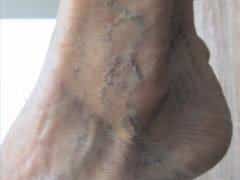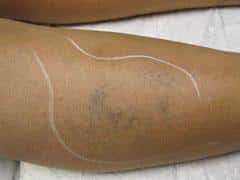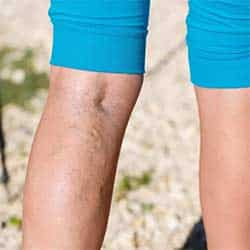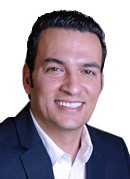Do you avoid wearing shorts and skirts because of unsightly varicose and spider veins? Large, raised and swollen blood vessels that twist and turn just under the surface of the skin, usually on the legs, are known as varicose veins. Smaller red, purple and blue vessels forming an intricate web that’s also visible through the skin are known as spider veins. They’re most often seen on the legs but can occur on the face as well.
Heredity often determines if you’re prone to developing them. They’re more common in women than men – even more so if your occupation involves a lot of standing. Obesity can be a cause as can hormonal influences during pregnancy, puberty and menopause. It’s estimated between 30 to 60% of adults have varicose or spider veins and incidence of them increases with age.


What to do? Some experts advocate wearing support stockings especially to relieve painful varicose vein symptoms including burning and throbbing. Elevating the legs helps too. Discomfort and unattractiveness aside, complications have been known to set in. Varicose veins can form a painful clot with inflammation of the vein – a condition known as thrombophlebitis.
A venerable procedure known as schlerotherapy treats spider veins. A highly concentrated saline solution is injected directly into veins over a course of approximately three sessions. This causes the offending veins to gradually disappear over a period of six months. Lasers and intense pulsed light therapy has proven effective in some instances, particularly for tiny veins in fair skinned people. Heat energy is used to selectively damage or destroy abnormal veins.
Varicose veins often require surgery. Techniques such as surgical litigation and stripping involve making an incision in the skin and either tying off or removing a long segment of vein. Another procedure known as ambulatory phlebectomy allows for the removal of large surface veins through very small incisions that don’t require stitches.

While pain and other symptoms drive some individuals to seek treatment for varicose and spider veins, for others it’s strictly a cosmetic pursuit. Whatever your situation, let the professionals at SBC Dermatology determine the best course of therapy for you!

